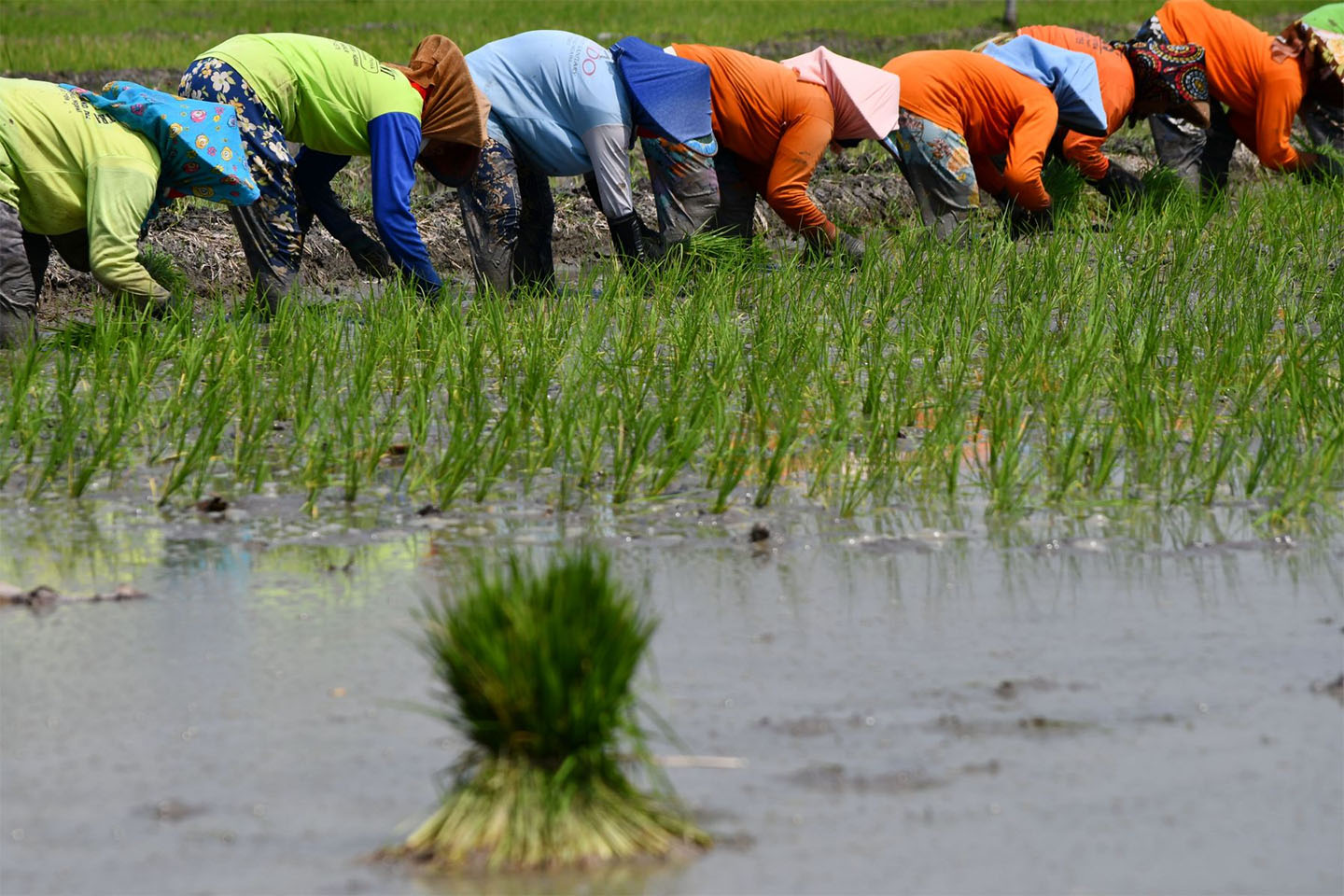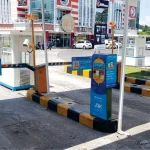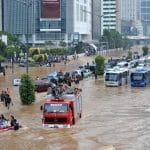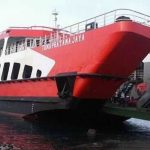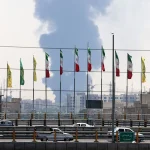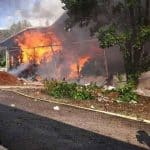Liga Asuransi – Dear risk takers, how are you? I hope your business is doing well.
As always, in this blog, we focus on a discussion about risk management and insurance. This time we will explore the natural phenomenon known as El Nino.
As a senior insurance broker, I need to share this article with all readers to avoid the impact of this natural disaster. If you like this article, please share it with your friends so they can understand as you do.
Based on information from BMKG, the peak of El Nino will occur in the second semester of 2023.
Minister of Agriculture of Indonesia Syahrul Yasin Limpo said in a meeting with Commission IV of the House of Representatives, Central Jakarta, Tuesday (13/6/2023), that extreme hot weather or El Nino has the potential to cause drought on agricultural land. This was revealed based on Meteorology, Climatology, and Geophysics Agency (BMKG) predictions.
He said El Niño has the potential to cause 560,000-870,000 hectares (ha) of agricultural land to be drought. That number increases during normal weather by 200,000 hectares of drought.
UNDERSTANDING EL NINO
Indonesia, a sprawling archipelago in Southeast Asia, has breathtaking landscapes, rich biodiversity, and vibrant cultures. However, this tropical paradise faces a recurring threat that wreaks havoc on its ecosystems and communities: the combined forces of El Niño and escalating fire risks. El Niño, a complex weather phenomenon with global implications, has long been recognized as a significant catalyst for increased fire incidents in Indonesia.
In this article, we embark on a journey to unravel the intricate relationship between El Niño and the heightened fire risks that plague Indonesia. By understanding the underlying mechanisms and unraveling the ecological implications, we can gain crucial insights into this destructive synergy and pave the way for proactive measures to mitigate its impacts.
First, let us delve into the core essence of El Niño. At its heart, El Niño is a natural climate cycle characterized by the warming of the tropical Pacific Ocean, particularly the waters near the equator. This warming alters atmospheric conditions, leading to events reverberating across vast regions and shaping weather patterns worldwide.
During an El Niño event, the delicate equilibrium of Indonesia’s climate is disrupted. The usual trade winds, which blow from east to west, weaken or even reverse their course, causing an abnormal redistribution of warm surface waters from the eastern to the central and western Pacific. Consequently, this alteration in oceanic and atmospheric dynamics creates a cascade of effects that transcend borders and continents.
One of the most alarming consequences of El Niño in Indonesia is the exacerbation of fire risks. As the Pacific waters warm, they disrupt the rainfall patterns, leading to drier conditions in parts of the country. This prolonged dry spell and increased temperatures transform Indonesia’s lush forests and peatlands into tinderboxes waiting to ignite.
Moreover, the impact of El Niño-induced fires extends far beyond the immediate devastation. The billowing smoke and toxic haze generated by these fires engulf vast regions, affecting air quality and posing severe health risks for humans and wildlife. Additionally, destroying forests and peatlands releases significant amounts of greenhouse gases, contributing to climate change and exacerbating global warming.
Understanding the intricacies of this intertwined relationship between El Niño and fire risks is crucial to devise effective prevention, preparedness, and mitigation strategies. By exploring historical data, scientific research, and firsthand accounts, we can shed light on the patterns, drivers, and impacts of fires during El Niño events.
Join us on this enlightening journey as we unravel the complex web of El Niño’s influence on Indonesia’s fire risks, seeking to build resilience and forge a path toward a sustainable future for this great nation.
THE IMPACT OF EL NINO ON THE FIRE RISKS
El Niño significantly influences fire risks, particularly in regions like Indonesia. Here’s a closer look at the impact of El Niño on fire risks and why it occurs:
- Prolonged Drought Conditions
During El Niño events, the typical weather patterns in Indonesia are disrupted. The warming of the central and eastern tropical Pacific Ocean leads to a weakening or reversing of the trade winds, which are responsible for bringing moist air from the east. This alteration in atmospheric circulation patterns reduces rainfall in Indonesia, leading to prolonged drought conditions.
- Vegetation Dryness
The extended period of reduced rainfall during El Niño creates a water deficit in the soil and vegetation. As a result, forests, peatlands, and other ecosystems become exceptionally dry, turning them into highly explosive environments. The lack of moisture in the vegetation increases the susceptibility to fires and facilitates their spread.
- Increased Fire Ignition Sources
The drier conditions associated with El Niño make vegetation more prone to ignition and increase the availability of fire ignition sources. Human activities, such as land clearing through slash-and-burn techniques, agricultural practices, and using fire for land management, become riskier during dry periods. Additionally, lightning strikes, often associated with El Niño-induced thunderstorms, can ignite fires in dry landscapes.
- Peatland Fire Risks
Indonesia’s peatlands are particularly vulnerable to fires during El Niño events. Peatlands are waterlogged ecosystems with high carbon content, acting as carbon sinks. However, the reduced rainfall during El Niño lowers the water table, exposing the peat to air and making it highly flammable. Once ignited, peat fires can burn underground and release vast amounts of greenhouse gases, including carbon dioxide and methane, exacerbating climate change.
- Haze and Air Pollution
The fires during El Niño events produce significant amounts of smoke and haze, resulting in severe air pollution. The smoke particles and pollutants released from the burning vegetation can harm air quality, posing health risks for communities, animals, and ecosystems. The haze can also travel long distances, affecting neighboring countries and even reaching beyond Southeast Asia.
- Climate Feedback Loop
The fires that occurred during El Niño contributed to a climate feedback loop. The release of greenhouse gases from burning vegetation, particularly carbon dioxide, and methane, adds to the atmospheric concentrations of these gases, further exacerbating global warming. This intensifies the overall impacts of climate change, including the occurrence and severity of El Niño events, creating a feedback loop that perpetuates the cycle of fire risks.
WHICH PART OF INDONESIA IS VULNERABLE TO THE NINO EFFECT?
Various regions of Indonesia are vulnerable to the effects of El Niño. Here are some particularly susceptible areas:
- Sumatra
The large island of Sumatra in western Indonesia is often heavily impacted by El Niño. The provinces of Riau, Jambi, South Sumatra, and Lampung are especially vulnerable to increased fire risks during El Niño events. The presence of extensive peatlands in these regions exacerbates the fire hazards.
- Kalimantan
The island of Borneo, known as Kalimantan in Indonesia, is highly prone to the effects of El Niño. The provinces of Central Kalimantan, West Kalimantan, and South Kalimantan frequently experience heightened fire risks during El Niño. The vast peatland areas in these regions make them susceptible to prolonged drought and subsequent fires.
- Papua
The easternmost province of Indonesia, Papua, is also susceptible to the impacts of El Niño. The combination of drier conditions and potential changes in rainfall patterns during El Niño events can increase the fire risks in the region. The presence of forests and biodiversity-rich areas adds to the vulnerability.
- Nusa Tenggara
The provinces of Nusa Tenggara Timur (East Nusa Tenggara) and Nusa Tenggara Barat (West Nusa Tenggara), located in southern Indonesia, can be affected by El Niño. These regions often experience reduced rainfall and prolonged dry periods during El Niño, leading to increased fire risks.
- Sulawesi
The island of Sulawesi, including provinces like South Sulawesi, Central Sulawesi, and Southeast Sulawesi, is prone to the impacts of El Niño. Drought conditions and reduced rainfall associated with El Niño events can increase fire risks, particularly in forested areas.
It’s important to note that the vulnerability to El Niño effects can vary within each region, depending on factors such as topography, proximity to water bodies, land-use practices, and the presence of peatlands. Additionally, neighboring countries in Southeast Asia, such as Malaysia and Singapore, can also experience transboundary impacts from fires in Indonesia during El Niño events due to the transport of smoke and haze.
RISK MITIGATIONS AND FIRE PREVENTIVE ACTIONS
Preventing fire risks caused by El Niño requires a combination of proactive measures, community involvement, policy enforcement, and sustainable land management practices. By implementing these strategies, we can reduce the vulnerability of ecosystems, safeguard communities, and mitigate the devastating impacts of fires during El Niño events.
- Implement Strict Fire Prevention Policies
Governments and local authorities should enforce strict regulations and policies to prevent fire incidents during El Niño. These may include banning open burning practices, regulating land-clearing methods, and implementing penalties for non-compliance. Public awareness campaigns can also help educate communities about the risks and consequences of fires.
- Enhance Early Warning Systems
Developing and strengthening early warning systems can greatly aid in fire prevention. To detect and monitor fire-prone areas, utilize satellite imagery, remote sensing technologies, and meteorological data. This enables timely dissemination of warnings to communities, allowing them to take preventive measures and respond swiftly to fire outbreaks.
- Promote Community Engagement and Education
Engage local communities in fire prevention efforts through education and awareness programs. Teach proper land management practices, fire safety, and techniques for responsible land clearing. Encourage community members to report suspicious activities and participate in firefighting initiatives, such as volunteer firefighter programs.
- Implement Controlled Burning Techniques
Controlled burning, also known as prescribed burning, can be used strategically to reduce fuel loads and prevent the buildup of flammable materials. It involves carefully planned and supervised fires under controlled conditions during favorable weather, ensuring the fire remains manageable and does not pose a threat.
- Strengthen Firefighting Capabilities
Enhance the capacity of firefighting agencies by providing them with adequate resources, training, and equipment. This includes fire suppression tools, firefighting aircraft, and sufficient manpower. Collaborate with neighboring countries and international organizations to facilitate mutual aid agreements and share firefighting expertise and resources during emergencies.
- Sustainable Land Use and Agricultural Practices
Promote sustainable land use practices, such as agroforestry and sustainable agriculture methods, that minimize the need for extensive land clearing and slash-and-burn practices. Encourage using alternative land management techniques, including mechanical clearing and crop rotation, to reduce fire risks associated with traditional agricultural practices.
- Restoration and Conservation Efforts
Focus on restoring and conserving ecosystems, particularly peatlands, which are highly vulnerable to fires during El Niño. Implement measures to restore degraded peatlands, such as re-wetting initiatives, reforestation, and establishing protected areas. These efforts help maintain the natural moisture levels and reduce the risk of peat fires.
THE IMPORTANCE OF FIRE INSURANCE
Having fire insurance can provide several benefits to reduce the effects of El Niño. Here are some advantages:
- Financial Protection
Fire insurance offers financial protection against losses caused by fire incidents during El Niño. If your property, assets, or business suffers damage or is destroyed by fires, the insurance policy can help cover the costs of repairs, replacements, or rebuilding. This financial support can mitigate the economic impact of fire risks and aid recovery.
- Business Continuity
Fire insurance can ensure business continuity during and after El Niño-induced fire incidents. The insurance coverage can help cover the costs of temporary relocation, equipment replacement, and other expenses necessary to resume operations. This minimizes disruptions, allows timely recovery, and helps businesses stay afloat in challenging circumstances.
- Peace of Mind
Fire insurance provides peace of mind for property owners, homeowners, and business operators. Knowing you have coverage can alleviate concerns about the financial consequences of fire incidents during El Niño. Knowing that your insurance can provide support, it allows you to focus on preventive measures, risk mitigation, and overall disaster preparedness.
- Property Protection
Fire insurance incentivizes property owners to prioritize fire prevention measures and invest in fire safety infrastructure. Insurance companies often offer lower premiums or favorable terms to properties with fire prevention systems, such as fire alarms, sprinkler systems, fire-resistant building materials, and adequate emergency exits. This promotes a safer environment, reducing the risk of fires and their potential impact during El Niño.
- Community Resilience
Widespread adoption of fire insurance within a community contributes to overall resilience against fire risks during El Niño. As more individuals and businesses secure fire insurance, the financial burden of recovery and rebuilding after fire incidents is distributed among insurers, reducing the strain on local economies and communities. This promotes a collective approach to disaster management and enhances community resilience.
- Risk Management and Mitigation
Fire insurance companies often provide risk assessment and mitigation services to policyholders. They can offer guidance on fire prevention measures, best practices, and strategies to reduce the likelihood and impact of fire incidents. Insurance companies have a vested interest in minimizing fire risks and can play a role in promoting fire safety education and measures within their policyholder network.
It’s important to carefully review and understand the terms and coverage of fire insurance policies, ensuring they align with your specific needs and the risks associated with El Niño-induced fire hazards. Consult with insurance professionals or brokers to choose appropriate coverage that protects your property, assets, and business interests from fire-related risks during El Niño and beyond.
WHY DO YOU NEED THE SERVICE OF AN INSURANCE BROKER FOR ALL YOUR INSURANCE COVERS?
Customers may benefit from working with a licensed insurance broker for their property insurance for several reasons:
- Expertise and Knowledge
Licensed insurance brokers have in-depth knowledge and expertise in the insurance industry. They understand the complexities of property insurance policies, coverage options, and applicable regulations. Brokers can assess your needs, analyze risks, and recommend suitable insurance products tailored to your requirements.
- Access to Multiple Insurance Options
Insurance brokers work with multiple insurance companies and can access various insurance products and coverage options. This allows them to compare policies from different insurers and present you with options that best align with your needs and budget. Brokers can help you navigate through the complexities of policy terms and conditions to ensure you make informed decisions.
- Personalized Recommendations
Insurance brokers provide personalized recommendations by thoroughly assessing your property, assets, and risk profile. They take the time to understand your unique circumstances and provide advice on appropriate coverage limits, deductibles, and policy features. Brokers can tailor insurance solutions to address specific risks associated with your property, ensuring comprehensive protection.
- Claims Assistance and Advocacy
Insurance brokers act as intermediaries between you and the insurance company in the event of a claim. They assist with claims processes, documentation, and negotiations, ensuring a smoother and more efficient claims experience. Brokers advocate, leveraging their industry knowledge to help you navigate any potential claim-related challenges or disputes.
- Continuous Support and Policy Management
Insurance brokers offer ongoing support throughout the policy lifecycle. They can review and update your coverage as your property and insurance needs change. Brokers also monitor the insurance market for any new products, coverage enhancements, or cost-saving opportunities that may benefit you. They are your trusted advisor, guiding risk management and helping you maintain appropriate coverage.
- Compliance and Risk Mitigation
Insurance brokers ensure your property insurance complies with relevant laws, regulations, and contractual obligations. They stay updated on legal requirements and industry standards, assisting you in maintaining compliance. Brokers also help identify potential risks, recommend risk mitigation strategies, and provide guidance on loss prevention measures to help protect your property and assets.
- Time and Convenience
Working with an insurance broker saves you time and effort. Instead of individually researching and approaching multiple insurance companies, brokers streamline the process by presenting you with carefully selected options. They handle the paperwork, policy administration, and renewal processes, allowing you to focus on other priorities while protecting your property.
Choosing a licensed insurance broker with integrity, professionalism, and transparency is important. Verify the broker’s credentials, check their license status, and seek recommendations or reviews from other clients to ensure you work with a reputable and reliable professional.
CONCLUSIONS
In conclusion, understanding the impact of El Niño on fire risks in Indonesia is crucial for effective disaster management and risk mitigation. El Niño events, characterized by warmer ocean temperatures in the Pacific, can lead to drought conditions and increased fire hazards in vulnerable regions. The combination of dry weather, reduced rainfall, and changes in weather patterns during El Niño can create favorable conditions for fires to spread rapidly and cause significant damage to ecosystems, property, and communities.
To address these risks, preventive measures and proactive strategies are essential. This includes improving early warning systems, enforcing fire prevention policies, promoting sustainable land use practices, engaging communities, and strengthening firefighting capabilities. Collaboration among governments, regional organizations, and international partners is crucial for sharing knowledge, resources, and mutual aid during fire emergencies.
Also, fire insurance can provide valuable financial protection and peace of mind for individuals and businesses affected by El Niño-induced fires. Fire insurance policies help mitigate the economic impact of fire incidents, support business continuity, and incentivize risk management practices.
This article is presented by L&G Insurance Broker—a leading insurance broker in property insurance in Indonesia.
For all your insurance needs in Indonesia, please call L&G now!
—
LOOKING FOR INSURANCE PRODUCTS? DON’T WASTE YOUR TIME AND CONTACT US RIGHT NOW
L&G HOTLINE 24 HOURS: 0811-8507-773 (CALL – WHATSAPP – SMS)
website: lngrisk.co.id
E-mail: customer.support@lngrisk.co.id
—

